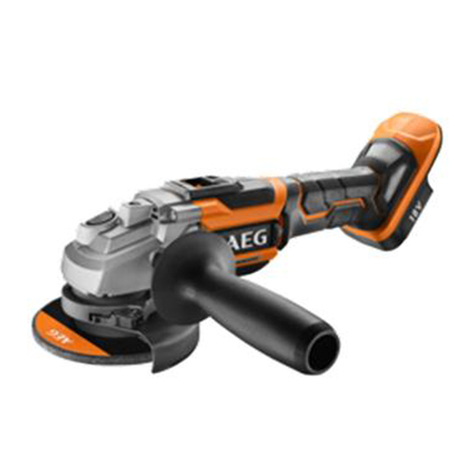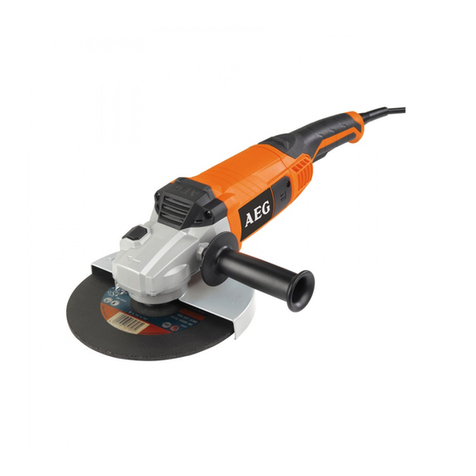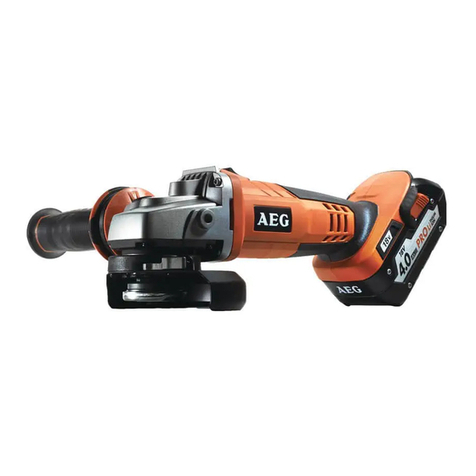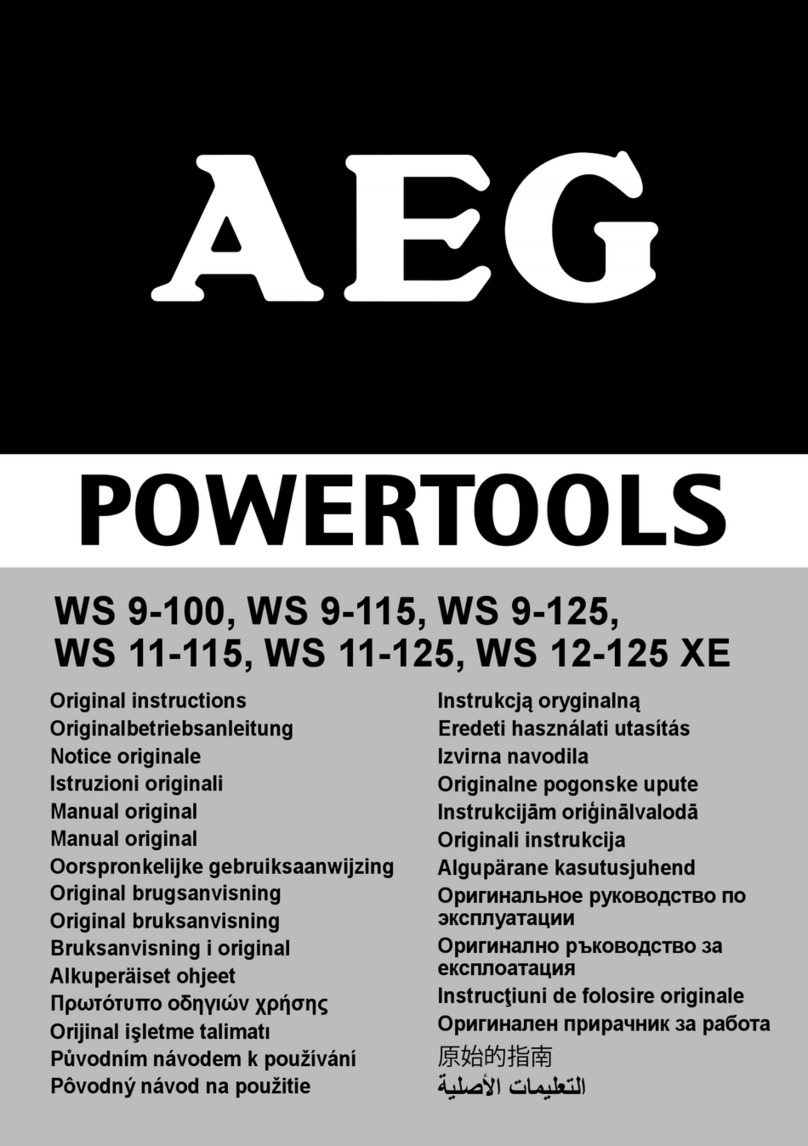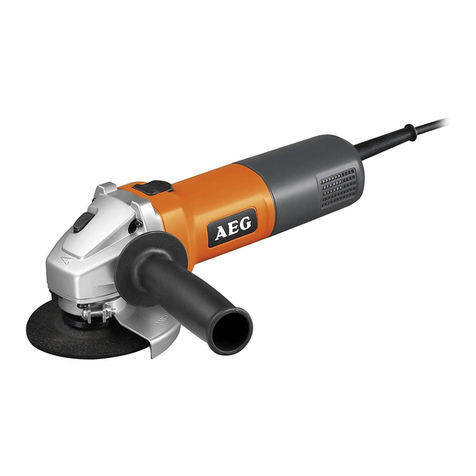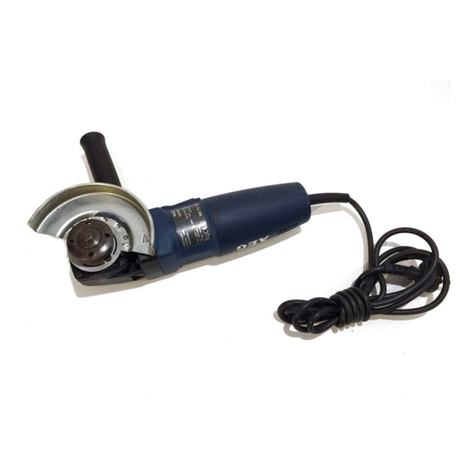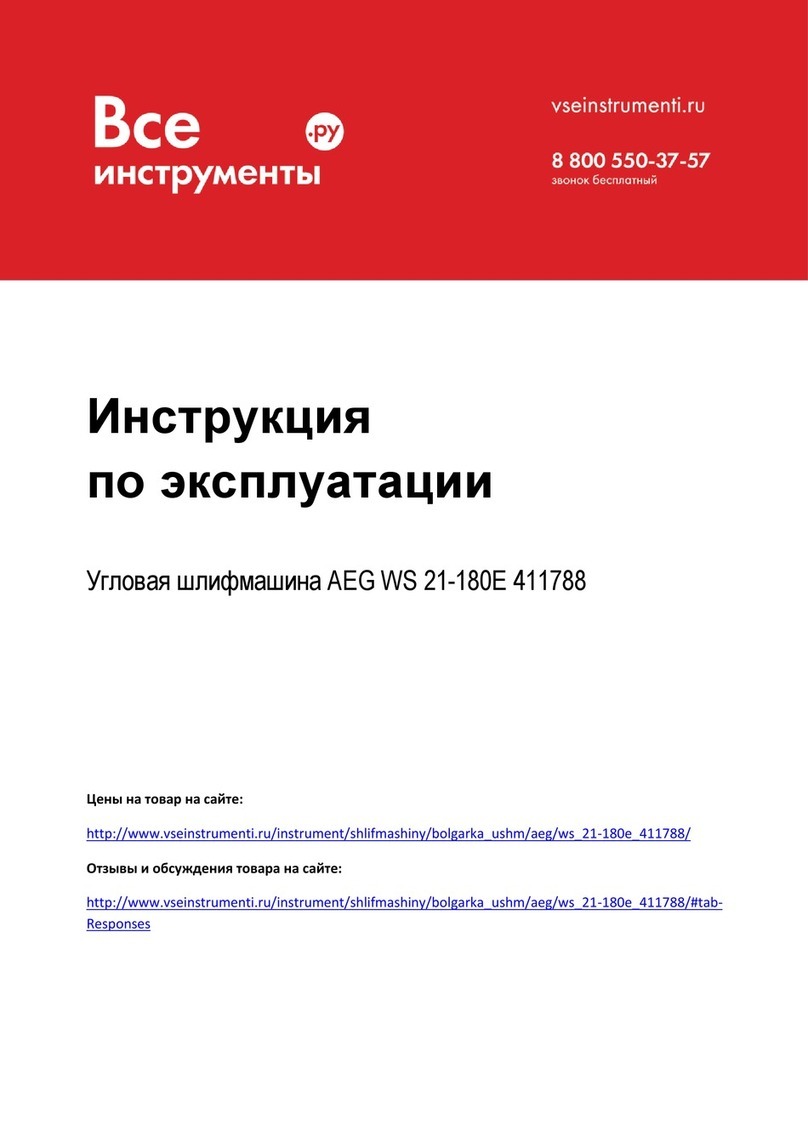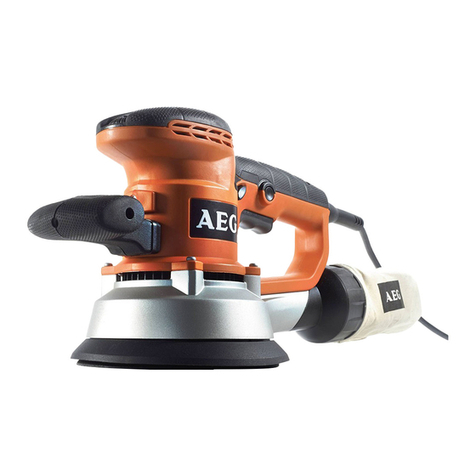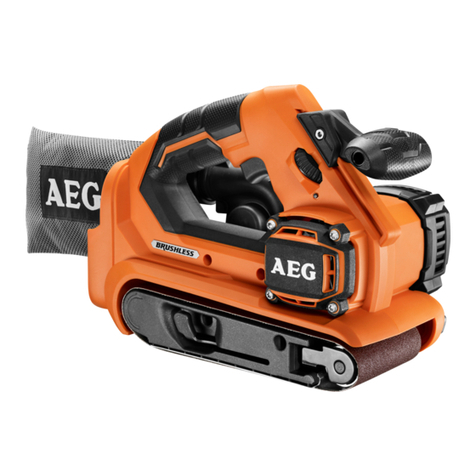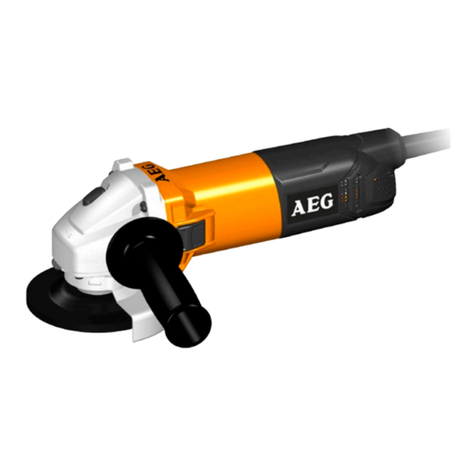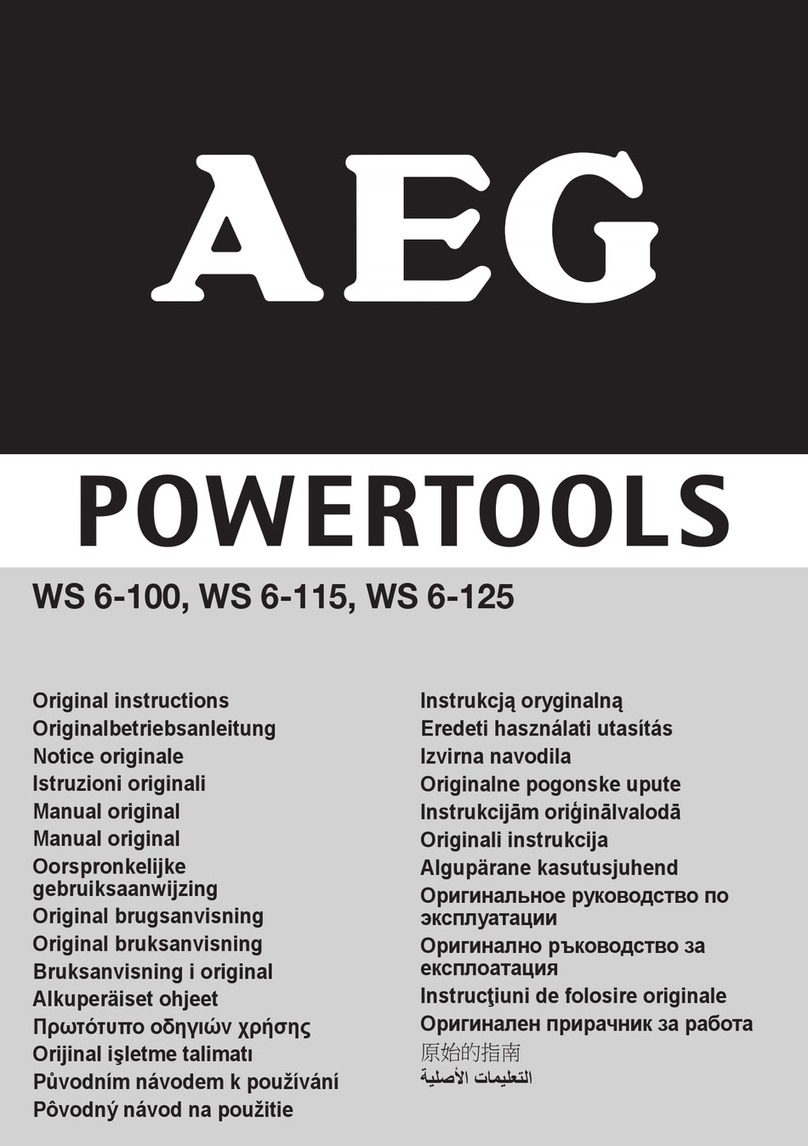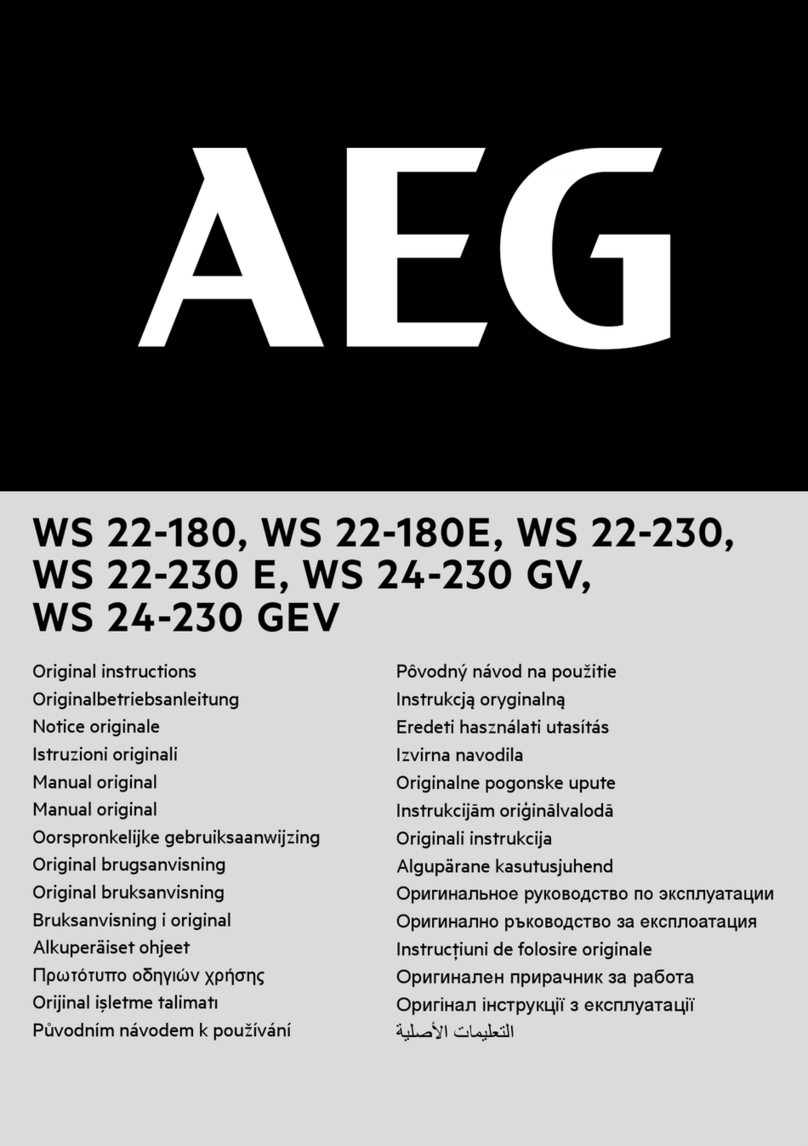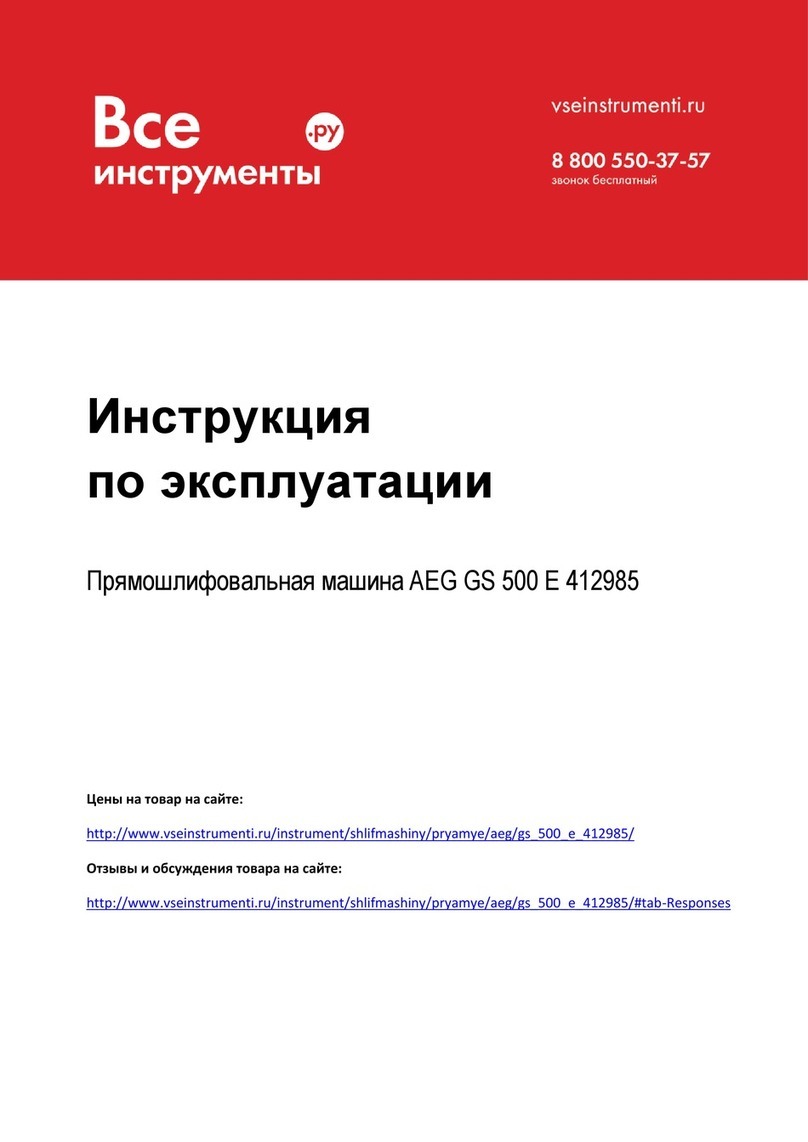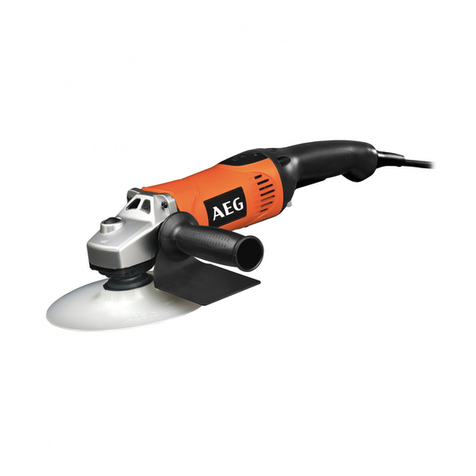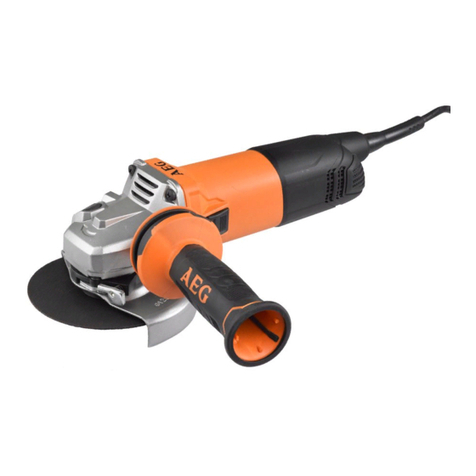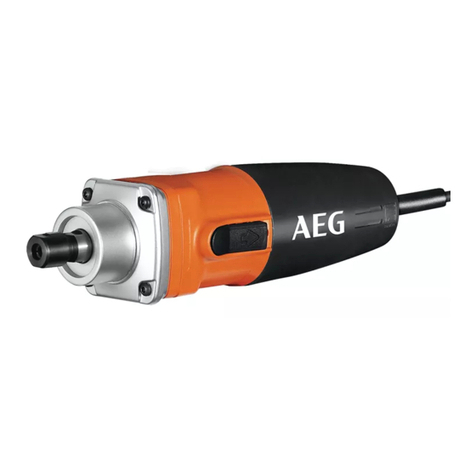
DEUTSCH 7 WS 700-100, WS 700-115, WS 700-125, WSE 700-115
Vorwort Sie sind anspruchsvoll und kaufen Qualität - Qualität von Atlas Copco. Wir haben
fürSieeinhaltbaresund möglichstsicheresElektrowerkzeug gebaut.Effektivesund
weitgehend gefahrloses Arbeiten ist aber nur möglich, wenn Sie diese Gebrauchs-
anleitung lesen und danach handeln. Wir wollen, daßSie sich auch in Zukunft ent-
scheiden für AEG-Elektrowerkzeuge von Atlas Copco.
Technische
Daten
Hinweise für
Ihre Sicherheit ■Sicherheitshinweise auf rotem Beiblatt (4 000 333 024) beachten!
■Gehäuse der Maschine nicht anbohren, da sonst die Schutzisolierung unterbrochen
wird (Klebeschilder verwenden).
■Stecker aus der Steckdose ziehen, bevor irgendeine Einstellung oder Wartung vor-
genommen wird.
■Maschine nur ausgeschaltet an die Steckdose anschließen.
■Anschlußkabel stets vom Wirkungsbereich der Maschine fernhalten. Kabel immer
nach hinten von der Maschine wegführen.
■Vor jedem Gebrauch Gerät, Anschlußkabel, Verlängerungskabel und Stecker auf
Beschädigung und Alterung kontrollieren. Beschädigte Teile nur von einem Fach-
mann reparieren lassen.
■Die Werkzeugspindel läuft nach, nachdem das Gerät ausgeschaltet wurde. Maschi-
ne erst nach Stillstand ablegen.
■Nicht in den Gefahrenbereich der laufenden Maschine greifen.
■Beim Arbeiten mit der Maschine stets Schutzbrille und Gehörschutz tragen. Schutz-
handschuhe, festes und rutschsicheres Schuhwerk und Schürze werden empfohlen.
■Stets den Zusatzhandgriff verwenden.
■Beim Schruppen und Trennen immer mit Schutzhaube arbeiten.
■Nur Arbeitswerkzeuge verwenden, deren zulässige Drehzahl mindestens so hoch
ist wie die höchste Leerlaufdrehzahl des Gerätes.
■Abmessungen der Schleifscheiben beachten. Lochdurchmesser mußohne Spiel
zum Aufnahmeflansch passen. Keine Reduzierstücke oder Adapter verwenden.
■Schleifwerkzeuge vor dem Gebrauch überprüfen. Das Schleifwerkzeug mußein-
wandfrei montiert sein und sich frei drehen können. Probelauf mindestens 30 Se-
kunden ohne Belastung durchführen. Beschädigte, unrunde oder vibrierende
Schleifwerkzeuge nicht verwenden.
■Gerät sofort ausschalten, wenn beträchtliche Schwingungen auftreten oder andere
Mängel festgestellt werden. Überprüfen Sie die Maschine, um die Ursache festzu-
stellen.
■Schleifscheiben stets gemäß den Angaben des Herstellers verwenden und aufbe-
wahren.
■Beim Schleifen von Metallen entsteht Funkenflug. Darauf achten, daßkeine Perso-
nen gefährdet werden. Wegen der Brandgefahr dürfen sich keine brennbaren Ma-
terialien in der Nähe (Funkenflugbereich) befinden. Keine Staubabsaugung
verwenden.
Typ WS 700-100 WS 700-115 WS 700-125 WSE 700-115
Nennaufnahme (W) 710 710 710 710
min. Leerlaufdrehzahl (min-1)2700
max. Leerlaufdrehzahl (min-1) 11000 10000 10000 10000
max. Schleifscheiben-Ø(mm) 100 115 125 115
Spindelgewinde M10 M14 M14 M14
Gewicht (kg) 1,6 1,6 1,6 1,6
Drehzahlsteuerung –––•
Drehzahlbegrenzung ––– •
Sanftanlauf ––– •
